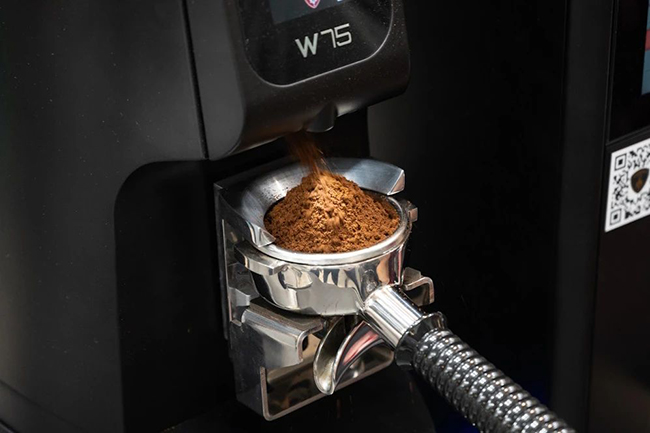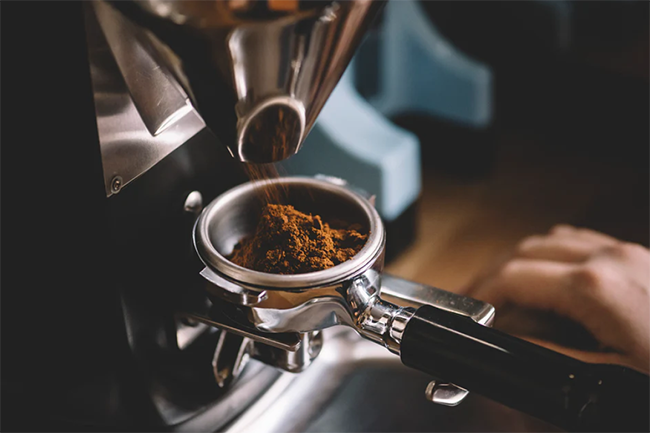Both coffee professionals and home baristas know how challenging it is to use a grinder with unstable performance. Due to too many factors at play – from different processing methods to powder spreading techniques – learning how to adjust espresso has taken some time, so a poorly performing grinder will only increase frustration.
Uneven particle size distribution, irregular powder content, and high grinding residue can seriously hinder the workflow, let alone extraction. Although we already know that a good grinder can have a significant impact on the overall quality of coffee, consistency is another key factor.
To further understand why consistency in a grinder is so important, freelance barista, trainer, and coffee content creator Ben Lewis shared his insights.
1.The development of coffee bean grinders is still ongoing
Premium coffee is a rapidly changing and dynamic industry, with new technologies being introduced every year. But recently, the most obvious innovation should be in the equipment, including coffee machines and grinders. With a deeper understanding of the importance of grinding size and particle size distribution in producing high-quality coffee, the grinder has also been continuously developed. The development of bean grinders has shifted from powder silos to timed and quantitative powder dispensing, and then to utilizing more intuitive technology, with a focus on providing consistency.
Ben Lewis is an independent barista, trainer, and coffee consultant in the UK. As someone familiar with running fast-paced coffee shops and industry activities, he believes that consistency and accuracy are crucial for maintaining the quality of espresso throughout the day. In addition, a stable Italian espresso grinder can not only improve coffee quality, but also help optimize workflow.
The key to the successful operation of any coffee shop and the overall job satisfaction of baristas – higher efficiency can reduce customer waiting time, improve productivity, and even create a safer working environment. Another key benefit is reducing waste. Most coffee grinders typically leave a large amount of ground coffee powder, which can have a negative impact on extraction and give espresso a stale, stale flavor. This means that baristas must regularly clean the grinder, which can result in more waste and hinder the workflow.
In less busy work environments, baristas have more time to carefully monitor powder levels, but as service speeds up, the frequency of this careful inspection may rapidly decrease. If the bean grinder can grind a small amount of powder every time, then baristas can consider one less variable when making a large amount of coffee and shift their attention to maintaining a good workflow.
2. Technological changes in manual coffee grinders
In the past twenty years, commercial bean grinders have become very complex and precise. The technology for preparing espresso, mainly in terms of particle size distribution, has become more advanced. The shape and design of the cutterhead are an indispensable part of this development. Especially for the 85mm flat disc, by reducing the amount of fine powder, a more consistent grinding size can be produced. These are very small particles, and if there is too much fine powder, it may lead to uneven extraction.
Conversely, the clarity of flavor is significantly improved, allowing baristas to showcase more subtle, complex, and subtle flavors in espresso. Some bean grinders are also equipped with extremely low residue system vertical chutes to help improve the consistency of powder content. Although the grinding residue may never be zero regardless of the brand or model used, by minimizing the residue, each serving of coffee can be fresh and precise.
Improve speed and workflow
The effort put into making coffee by baristas needs to be balanced with the amount of time customers are willing to wait, but balancing quality and speed is not always easy. High speed quantitative grinders can help facilitate this process. Ben pointed out that the extra few seconds obtained from each concentration can focus on perfect extraction, making high-quality milk and latte art, which are all crucial.
In a busy process, every second is crucial. Without efficiency, consistency, and accuracy, speed is meaningless. Using a grinder with consistent powder output can allow baristas to consider one less variable in high-yield situations. Using a time-based grinder to adjust the grinding size will inevitably change the weight of the powder, which means baristas must manually add or remove coffee powder from the coffee handle. Of course, this is a time-consuming task – especially during critical service times.
Silent grinding and convenient operation
A good workflow combined with a stable coffee grinder can make a coffee shop successful. It has been proven that interaction between baristas and customers can improve customer satisfaction and retention rates, which is particularly important for small coffee shops. However, the noise generated by the grinder may also affect customer experience and participation opportunities. The process of grinding coffee will naturally be very loud, and some sounds and tones will be even more jarring. When you try to talk to customers in a caf é environment, higher tones tend to be more disruptive
Some bean grinders use silent grinding technology, which has a significant impact on the satisfaction of both baristas and consumers, and is very useful for maintaining interaction with customers. Of course, it can also make people more focused. Automation is also playing an increasingly important role in coffee shops, and the grinder is no exception. Some bean grinders include built-in touch screens and different activation modes, which are very user-friendly.
Other automated equipment can also be integrated with the grinder, such as the grinder’s built-in automatic powder press, to further improve consistency. The amount of powder pressing between baristas may vary greatly, making it difficult to maintain the same level of pressure during each brew. By adjusting the powder pressing pressure, the automatic powder press can be set to generate exactly the same pressure every time powder is pressed.
Without a precise and reliable grinder, it is almost impossible to extract delicious espresso for customers in a timely manner. The golden ratio of grinder efficiency and consistency may seem unattainable at times, but by investing in high-quality equipment that best supports baristas, coffee shops are sure to achieve even better results.
Post time: Jun-17-2025










